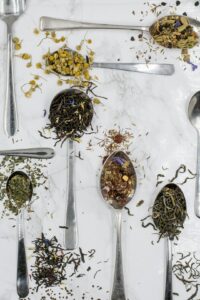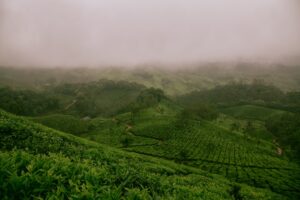Support our educational content for free when you purchase through links on our site. Learn more
How to Grow Tea Plants Indoors [2023]
Tea lovers rejoice! Did you know that you can grow your own tea plants right in the comfort of your own home? Growing tea plants indoors is not only a fun and rewarding hobby, but it also allows you to have a fresh supply of your favorite tea leaves at your fingertips. In this article, we will guide you through the process of growing tea plants indoors, from choosing the right variety to caring for your plants and harvesting the leaves. So grab your gardening gloves and let’s get started!
Table of Contents
- Quick Answer
- Quick Tips and Facts
- Background: The Art of Growing Tea Plants Indoors
- 1. Choosing the Right Tea Plant Variety
- 2. Setting Up Your Indoor Tea Garden
- 3. Caring for Your Tea Plants
- 4. Harvesting and Processing Tea Leaves
- 5. Troubleshooting Common Issues
- FAQ
- Conclusion
- Recommended Links
- Reference Links
Quick Answer
Growing tea plants indoors requires choosing the right variety, providing the ideal growing conditions, and following proper care and maintenance. Here are the key steps to grow tea plants indoors:
- Choose a tea plant variety suitable for indoor cultivation, such as Camellia sinensis or herbal tea plants like chamomile or peppermint.
- Set up a dedicated space with proper lighting, temperature, and humidity levels for your tea plants.
- Provide well-draining soil and water your plants regularly, keeping the soil moist but not waterlogged.
- Prune and fertilize your tea plants as needed to promote healthy growth.
- Harvest the leaves when they are mature and process them to make your own tea.
CHECK PRICE on:
Quick Tips and Facts
Before we dive into the details, here are some quick tips and interesting facts about growing tea plants indoors:
- Tea plants thrive in well-draining soil with a slightly acidic pH level between 6 and 6.5.
- They prefer bright, indirect light and temperatures between 65°F and 85°F (18°C to 29°C).
- Tea plants can be grown from seeds or propagated from cuttings.
- It takes approximately three years for tea plants to reach maturity and produce leaves suitable for making tea.
- Herbal tea plants, such as chamomile and peppermint, have shorter growth cycles and can be harvested sooner.
- Regular pruning helps tea plants maintain their shape and promotes new growth.
- Tea leaves can be processed in various ways, including drying, steaming, and rolling, to create different types of tea.
Now that you have a basic understanding, let’s explore the art of growing tea plants indoors in more detail.
Background: The Art of Growing Tea Plants Indoors
Growing tea plants indoors is a centuries-old tradition that originated in China and has since spread to other parts of the world. While tea is typically associated with large plantations and sprawling fields, it is entirely possible to cultivate tea plants in smaller spaces, such as your home or apartment.
Indoor tea gardening allows you to have more control over the growing conditions, resulting in healthier plants and better-tasting tea. Plus, it’s a fantastic way to connect with nature and experience the joy of growing your own tea from scratch.
1. Choosing the Right Tea Plant Variety
The first step in growing tea plants indoors is selecting the right variety for your space and preferences. Here are some popular tea plant varieties that can thrive indoors:
- Camellia sinensis: This is the tea plant species responsible for producing the leaves used to make traditional teas like green, black, and oolong. It is a versatile plant that can adapt to different growing conditions.
- Herbal tea plants: If you prefer herbal teas, consider growing plants like chamomile, peppermint, lavender, or lemon balm. These plants not only add fragrance and beauty to your indoor garden but also provide fresh ingredients for soothing herbal infusions.
When choosing tea plants, consider factors such as the available space, lighting conditions, and your personal taste preferences. It’s also worth noting that tea plants can be grown from seeds or propagated from cuttings. If you’re starting from seeds, be prepared for a longer wait until your plants reach maturity.
2. Setting Up Your Indoor Tea Garden
Now that you’ve chosen your tea plant variety, it’s time to set up your indoor tea garden. Here’s what you’ll need:
- Containers: Select containers that provide adequate drainage and are large enough to accommodate the root system of your tea plants. Terra cotta pots or food-grade plastic containers work well.
- Soil: Use a well-draining potting mix formulated for acid-loving plants. You can also create a custom mix by combining peat moss, perlite, and compost.
- Lighting: Tea plants require bright, indirect light to thrive. Place them near a south or east-facing window where they can receive at least 6 hours of sunlight per day. If natural light is limited, consider using grow lights to supplement the lighting.
- Temperature and Humidity: Tea plants prefer temperatures between 65°F and 85°F (18°C to 29°C). Maintain a humidity level of around 50% by using a humidifier or placing a tray of water near your plants.
- Watering: Tea plants like consistent moisture but not waterlogged soil. Water them when the top inch of soil feels dry, and make sure the excess water drains out of the containers.
3. Caring for Your Tea Plants
To ensure the health and vitality of your tea plants, it’s essential to provide proper care and maintenance. Here are some tips to keep in mind:
- Watering: Tea plants prefer consistent moisture. Water them when the top inch of soil feels dry, but avoid overwatering, as it can lead to root rot. Use room temperature water to prevent shocking the plants.
- Fertilizing: Feed your tea plants with a balanced, water-soluble fertilizer formulated for acid-loving plants. Follow the manufacturer’s instructions for application rates and frequency.
- Pruning: Regular pruning helps tea plants maintain their shape and promotes new growth. Remove any dead or yellowing leaves, and trim back overgrown branches to encourage bushier growth.
- Pest Control: Keep an eye out for common indoor pests like aphids, spider mites, and mealybugs. If you notice any signs of infestation, treat your plants with organic pest control methods or insecticidal soap.
4. Harvesting and Processing Tea Leaves
The ultimate reward of growing tea plants indoors is harvesting and processing your own tea leaves. Here’s how to do it:
- Harvesting: Tea leaves are best harvested when they are young and tender. For Camellia sinensis, wait until the plants are at least three years old before harvesting. Pluck the top two leaves and the bud from each stem. For herbal tea plants, harvest the leaves or flowers when they are fully grown.
- Processing: The processing method depends on the type of tea you want to make. For green tea, gently steam or pan-fry the leaves to stop oxidation. For black tea, allow the leaves to wither, then roll and ferment them. Herbal teas can be made by simply drying the leaves or flowers.
Experiment with different processing techniques to create your own unique tea blends. Remember to allow the processed leaves to cool and dry completely before storing them in airtight containers.
5. Troubleshooting Common Issues
Even the most experienced tea growers encounter challenges along the way. Here are some common issues you may face when growing tea plants indoors and how to address them:
- Yellowing leaves: Yellowing leaves can be a sign of overwatering, nutrient deficiencies, or improper lighting. Adjust your watering schedule, fertilize as needed, and ensure your plants are receiving enough light.
- Pest infestations: If you notice pests on your tea plants, such as aphids or spider mites, treat them with organic pest control methods or insecticidal soap. Quarantine affected plants to prevent the infestation from spreading.
- Disease prevention: To prevent diseases like root rot or fungal infections, ensure proper drainage, avoid overwatering, and provide good air circulation around your plants.
- Leaf drop: Leaf drop can occur due to sudden changes in temperature, low humidity, or inadequate watering. Maintain consistent growing conditions and adjust as needed to prevent leaf drop.
By staying vigilant and addressing issues promptly, you can help your tea plants thrive and produce abundant leaves for your tea-making adventures.
FAQ
Are tea plants easy to grow?
Tea plants can be moderately challenging to grow, especially if you’re aiming to produce high-quality tea leaves. However, with the right care and attention, they can be successfully cultivated indoors. Starting with young plants or cuttings can help speed up the process.
Read more about “… How Hard is it to Grow Your Own Tea?”
How long does it take for a tea plant to produce?
Tea plants typically take around three years to reach maturity and produce leaves suitable for making tea. However, herbal tea plants like chamomile or peppermint have shorter growth cycles and can be harvested sooner, usually within a few months.
Read more about “… Is it Difficult to Grow Tea? A Comprehensive Guide”
Where does the tea plant grow best?
Tea plants thrive in regions with a subtropical climate, such as China, India, Japan, and Sri Lanka. However, with proper care and attention, tea plants can be grown indoors in a wide range of climates.
Read more about “… What Environment Does Tea Need to Grow? The Ultimate Guide”
Can you grow tea plants in the USA?
Yes, tea plants can be grown in the USA, especially in regions with a mild climate, such as the southern states. However, indoor cultivation is a great option for tea lovers in colder regions or those with limited outdoor space.
Conclusion
Growing tea plants indoors is a delightful and rewarding experience that allows you to connect with nature and enjoy the fruits of your labor. By choosing the right tea plant variety, providing optimal growing conditions, and following proper care and maintenance, you can cultivate healthy tea plants and harvest your own tea leaves.
Remember to be patient and enjoy the journey. Experiment with different tea blends and processing techniques to create your own signature brews. Whether you’re sipping a soothing cup of chamomile tea or indulging in the rich flavors of freshly brewed green tea, the satisfaction of growing your own tea plants is unmatched.
Happy tea growing!
Recommended Links
- Green Tea Cultivation: Learn more about the cultivation of green tea and its unique characteristics.
- Herbal Tea Planting: Explore the world of herbal tea plants and discover new flavors and aromas.
- Tea Plant Varieties: Dive into the diverse world of tea plant varieties and find the perfect match for your indoor garden.
- Soil and Climate for Tea: Understand the importance of soil and climate conditions for successful tea cultivation.
CHECK PRICE on:
- Camellia sinensis plants
- Herbal tea plant seeds
- Shop tea gardening supplies on Walmart
- Shop tea gardening supplies on Etsy
Reference Links
- Hot Stuff: Grow an Indoor Tea Garden – HGTV: Find additional tips and inspiration for growing tea plants indoors.
- Camellia sinensis – Wikipedia: Learn more about the Camellia sinensis plant and its cultivation.
- Growing Herbs for Tea – University of Illinois Extension: Discover the world of herbal tea plants and how to grow them successfully.
- Tea Processing Steps – Camellia Forest Tea Gardens: Explore the different steps involved in processing tea leaves to create various types of tea.







